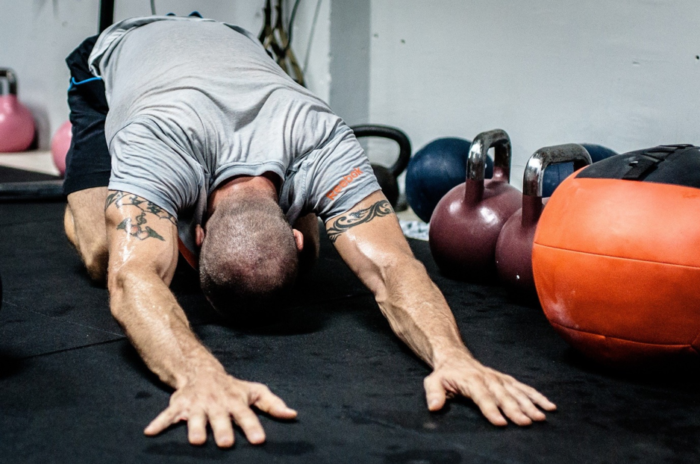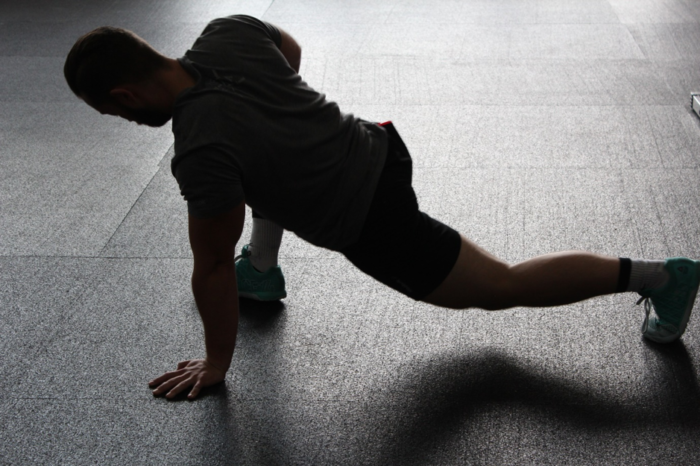Strength training has come a long way in the last 30 years. Unfortunately, flexibility training has not progressed at the same pace. There are still a lot of myths, misconceptions, and confusion around how to stretch properly and how to get the most out of a flexibility training program.
Although this article cannot cover all the mistakes people make when it comes to stretching, this article will focus on one of the most common, and dangerous mistakes people make when designing a flexibility training program, and that is the Full-Body Stretch Routine.

What is a Full-Body Stretch Routine?
I am often asked to design flexibility training programs for many different people and many different purposes, and one of the most common requests I receive is for a full-body stretch routine. This is a stretching routine that targets all the major muscle groups of the body equally. At first glance this sounds like a good idea and makes a lot of sense. So, why would you not want to improve the flexibility of all your major muscle groups?
Why is a Full-Body Stretch Routine a bad idea?
Every muscle group in your body has an opposing muscle group. They are called an agonist and an antagonist, and it is important to create a balance of tension between the two groups. A classic example of the agonist-antagonist relationship is the quadriceps in the front of your legs, which are opposed by the hamstrings in the back of your legs. These two muscle groups create a balance between each other, and when there is equal tension between the two, everything is fine.
Another way of looking at it is to imagine the spokes in a bicycle wheel. The spokes on one side of the wheel represent the agonist, or the quadriceps in the example above. While the spokes on the other side of the wheel represent the antagonist, or the hamstrings. When they are in balance, or there is equal tension between the two, the wheel runs smoothly. But what happens if you have tight quadriceps, for example? Having tight quadriceps (or tight spokes on only one side of the wheel) will pull the wheel down to one side and create a wobble in the wheel, and then the wheel runs out of alignment or out of balance.
The goal is always to create a balance between each opposing muscle group. In fact, it is better to have both muscle groups equally tight, than one muscle group tight and one loose, because this pulls the agonist-antagonist relationship out of balance.
If you do have an imbalance somewhere (and we all do), and you do a full-body stretch routine, or just stretch everything equally, those muscle groups may get more flexible, but the imbalance remains. So, for example, if you do have very tight quadriceps and relatively loose hamstrings, if you stretch both muscle groups equally, you will not fix the imbalance.
What should you be doing instead?
Imbalances and tight spots cause more injuries, aches, and pains than being tight all over. So, the goal of any stretching program is not only to improve flexibility, but to create an even balance of flexibility between all opposing muscle groups.
The same is true with strength training. If you only work on your chest and shoulders, and neglect the muscles in your back, you create an imbalance between the front of your body and the back of your body. It is this imbalance that can lead to all sorts of injuries, aches, and pains.
As a rule, if it is not tight and it is not causing you any problems, you do not need to stretch it. There are a few exceptions to this, such as athletes that require increased flexibility for their chosen sport, but for most people this is a wise rule to follow. So, if you perform a stretch and you do not feel any tension in the target muscle group, this indicates that you are not tight in that area.

As you start to notice which muscle groups are tight and which are not, aim to create a balance of flexibility between the front of your body and the back of your body, and the left side of your body and the right side of your body. For example, if you notice that your right hamstring muscles are tighter than your left hamstring muscles, work on the right hamstring muscles until you have even flexibility in both.
What type of stretching should you do?
Once you have identified your imbalances and those areas that are most tight for you, it is time to start stretching. While there are several different types and technique of stretching, static stretching is by far the best form of stretching for improving your flexibility and range of motion. In particular, long-hold static stretching (stretches held for longer than 30 seconds) and PNF stretching. Static stretches are stretching exercises that are performed without movement. In other words, you get into the stretch position, relax, and then hold the stretch for a specific amount of time.
Stretching is NOT a quick fix.
When someone starts a diet, they understand that it is going to take time before they see results. Likewise, when someone starts going to the gym, they understand that it takes time before they start getting stronger. And the same is true with stretching.
Doing a few stretches before playing your sport or going to the gym is not going to make you any more flexible. If you want to see improvements in your flexibility, there are no shortcuts, you need to engage in regular, consistent flexibility training over the long term.